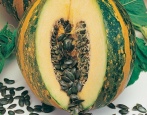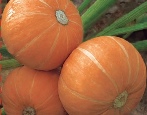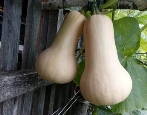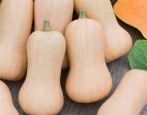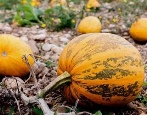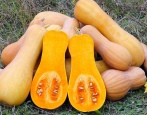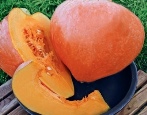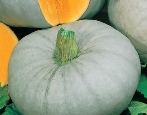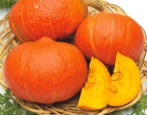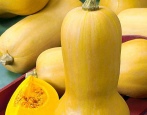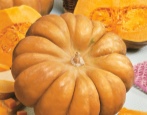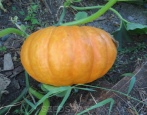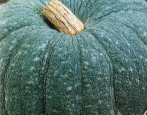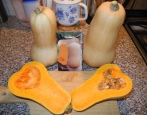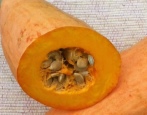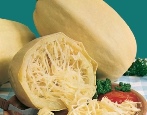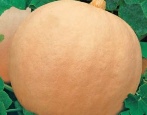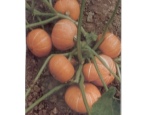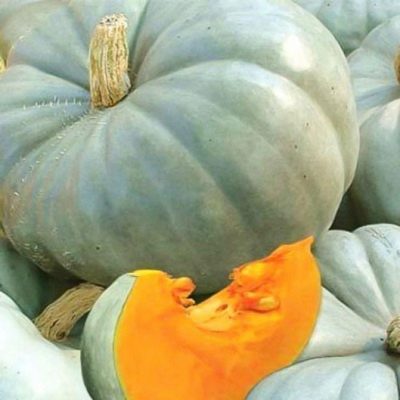
- Authors: Tekhanovich G.A., Azarov A.A.
- Year of approval: 1995
- Lash length, m: up to 5-6
- Leaf shape: pentagonal, weakly mousy
- Leaf color: green
- The form: flattened
- Weight, kg: 4,2-6,2
- Coloration: background dark gray or gray, pattern in the form of light gray and gray spots of various sizes
- Bark: thin, leathery, greenish yellow cut
- Color of the pulp: orange or egg yellow
Sweet Winter Pumpkin is a high-yielding late-ripening variety that has a juicy and sugary pulp. An unpretentious culture is capable of forming a stable and high-quality crop in regions with different climatic conditions, but fully ripe fruits can be grown only in southern latitudes. Due to its excellent taste and a long storage period, the variety has a universal purpose and is used for baking, stewing, marinating and preserving, as well as in the process of making juices, compotes and mashed potatoes.
Description of the variety
Sweet Winter Pumpkin is the result of the work of the Kuban Research Institute, it was created by such breeders as G. A. Tekhanovich and A. A. Azarov. In 1995, the variety was registered and went on sale. Initially, the late-ripening variety was intended for cultivation in warm climatic latitudes with little rainfall. However, due to its unpretentiousness and excellent taste, pumpkin has gained popularity in other regions with colder weather conditions, such as the Siberian Federal District, where plants are grown by seedlings. Juicy and aromatic fruits have a universal purpose and are used not only for the preparation of side dishes and sweet desserts, but also as the main ingredient in the process of creating vitamin drinks and nutritious purees.
Advantages:
- undemanding care;
- resistance to temperature extremes;
- stable yield;
- large-fruited;
- universal purpose;
- great taste;
- sweet consistency;
- storage period more than 12 months (subject to temperature and humidity conditions);
- drought resistance;
- transportability without significant mechanical damage;
- average lash size.
Disadvantages:
- high glucose content;
- the impossibility of obtaining fully ripe fruits when grown in the northern regions.
Characteristics of the appearance of plants and fruits
Sweet Winter Pumpkin is a large-fruited late-ripening variety that belongs to medium-sized crops. The average length of the branches is 5-6 meters, and their structure is fleshy and thick. The rich green leaf plates are large and shaped like a polygon with five corners. During the flowering period, large inflorescences of a rich yellow hue are formed on the plant.
The large-fruited variety belongs to the table species, in which the spherical fruits are slightly pressed down on the sides. The weight of the fruits is in the range of 4-6 kg, however, in the southern regions, subject to all agrotechnical recommendations, the weight of the pumpkin can reach 12 kg. The base color of a ripe vegetable can be either light gray or dark gray, with light streaks and variegated spots. A distinctive feature is the presence of a thin and tough peel, which allows you to keep the vegetable juicy and fresh for 1-1.5 years. The entire fruit is covered with tubercles and growths, and its surface is divided into uniform fragments.
The inner fleshy and very juicy part has a dense structure and a bright orange hue.Dark yellow seeds with a dense skin are collected in rich orange nests. The three planets have a flat position and an open structure. Average weight 1000 pcs. seed is about 400 grams. This variety is distinguished by the juiciness and sweetness of the fruit, as well as its rich vitamin composition.
Purpose and taste
A late-ripening sugar and juicy high-yielding variety has a universal purpose and is used not only for making desserts, side dishes, pickling and preservation, but also for making healthy and tasty purees, juices, compotes and preserves. Due to the increased vitamin composition and its low calorie content, fragrant fruits are included in many dietary meals and baby food. Despite the long storage period, the pumpkin can be frozen and dried. However, people suffering from high blood sugar should pay attention to the fact that the vegetable contains a large amount of glucose.
Ripening terms
Mass harvesting of late-ripening pumpkin can be carried out 108-141 days after the appearance of the first shoots. The period of full ripening of fruits depends on the region of cultivation and seasonal climatic conditions. Harvesting can be done from late July to September.
Yield
Pumpkin Winter sweet is a high-yielding variety that is capable of forming from 14 to 24 tons of large and juicy fruits on a plot of 1 hectare. On small household plots with an area of 1 m2, up to 30 kg of the crop can be harvested.
Growing and care
Pumpkin Winter sweet is an unpretentious crop that is capable of forming a high-quality and juicy harvest in regions with different climatic conditions. However, the maximum number of fruits can be obtained when growing the variety on sandy loam and light loamy fertile soils with a neutral acidity level. A place for the plant should be chosen well-lit and protected from strong currents of cold winds.
Sowing seeds for seedlings is best done in the second decade of April. In the ground, seed can be sown from May to June, depending on the region of cultivation. At the same time, you can plant on a permanent place of growth and seedlings. Before sowing, the seeds must be soaked in warm water for several hours and treated with growth stimulants. The classical planting scheme is 60x60 cm. The sowing depth is no more than 5 cm. After the emergence of seedlings, weak shoots must be removed.
Cultural care consists of a set of standard activities. Plants need to be watered regularly, weeded, removed weeds next to them, and fed. Do not forget about the regular hilling of the bare root system. To obtain large fruits, no more than 3 ovaries should be left on the plant.
Disease and pest resistance
A late-ripening pumpkin variety has a high level of resistance to the most common diseases, but if poorly maintained, diseases such as mosaic, fusarium and gray rot can reduce the yield and lead to plant death. Medium resistant to powdery mildew. We shouldn't forget about such pests as spider mites, aphids and whiteflies. Plants can be protected by carrying out preventive treatments with both chemical and biological preparations.
